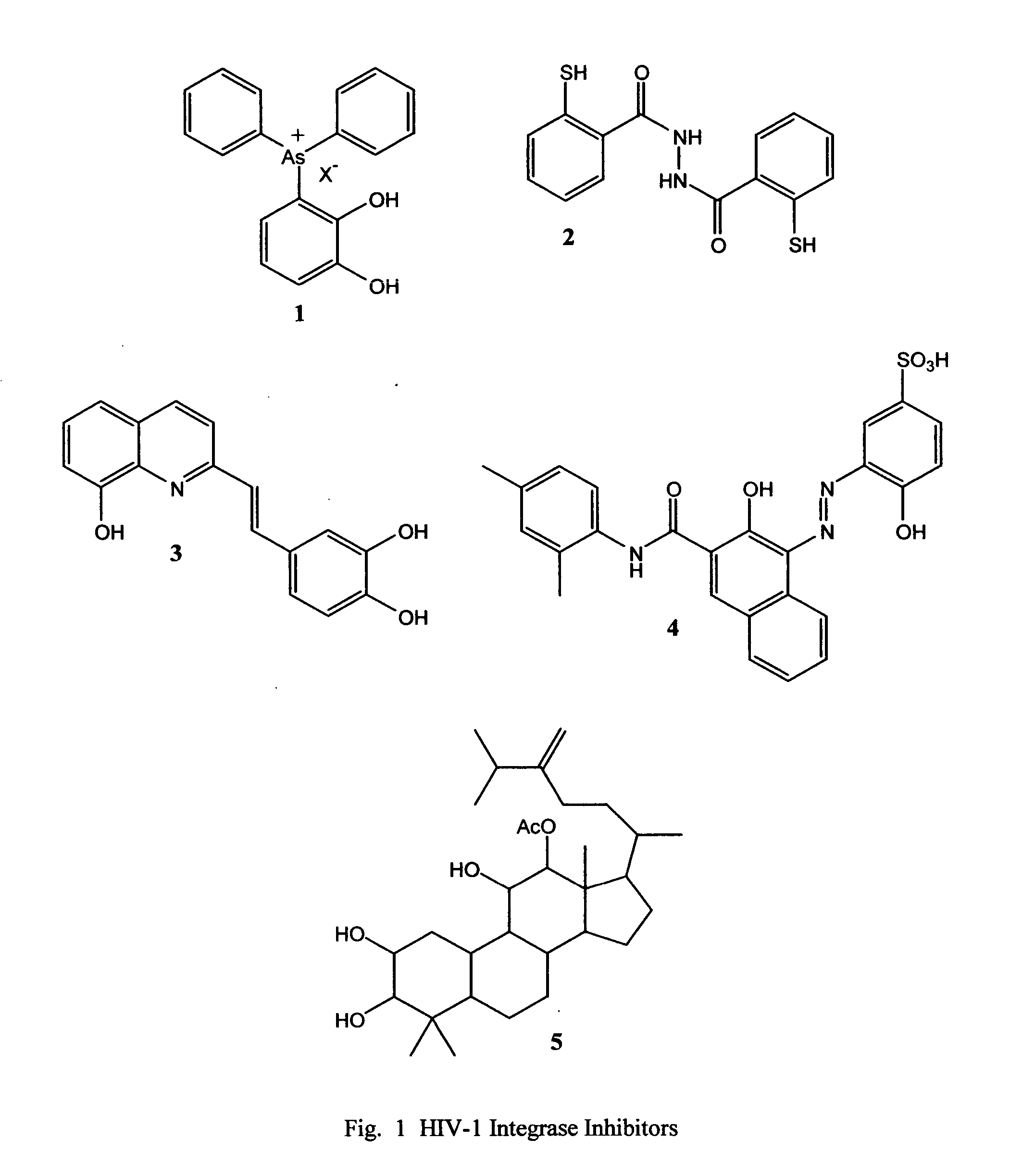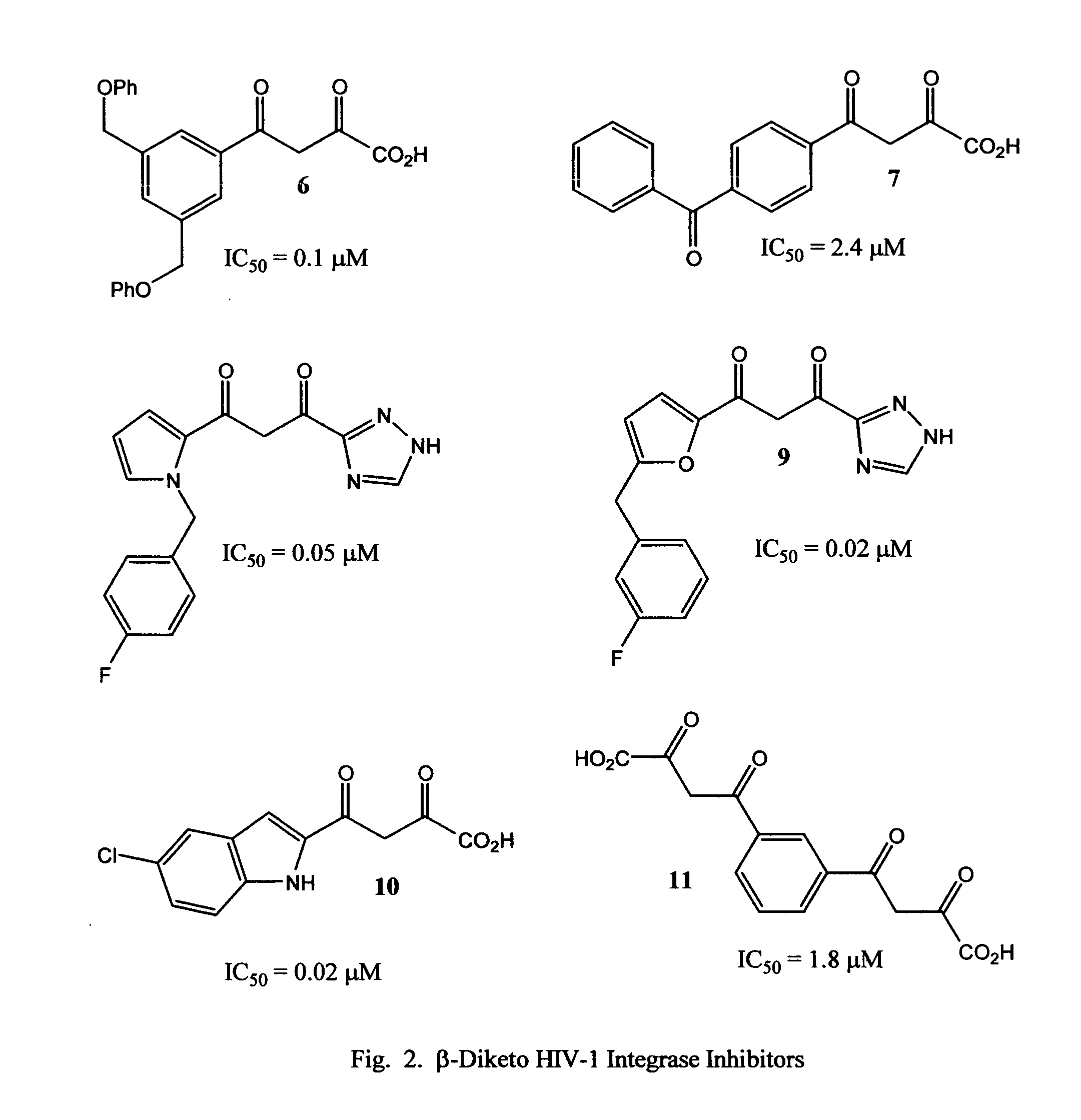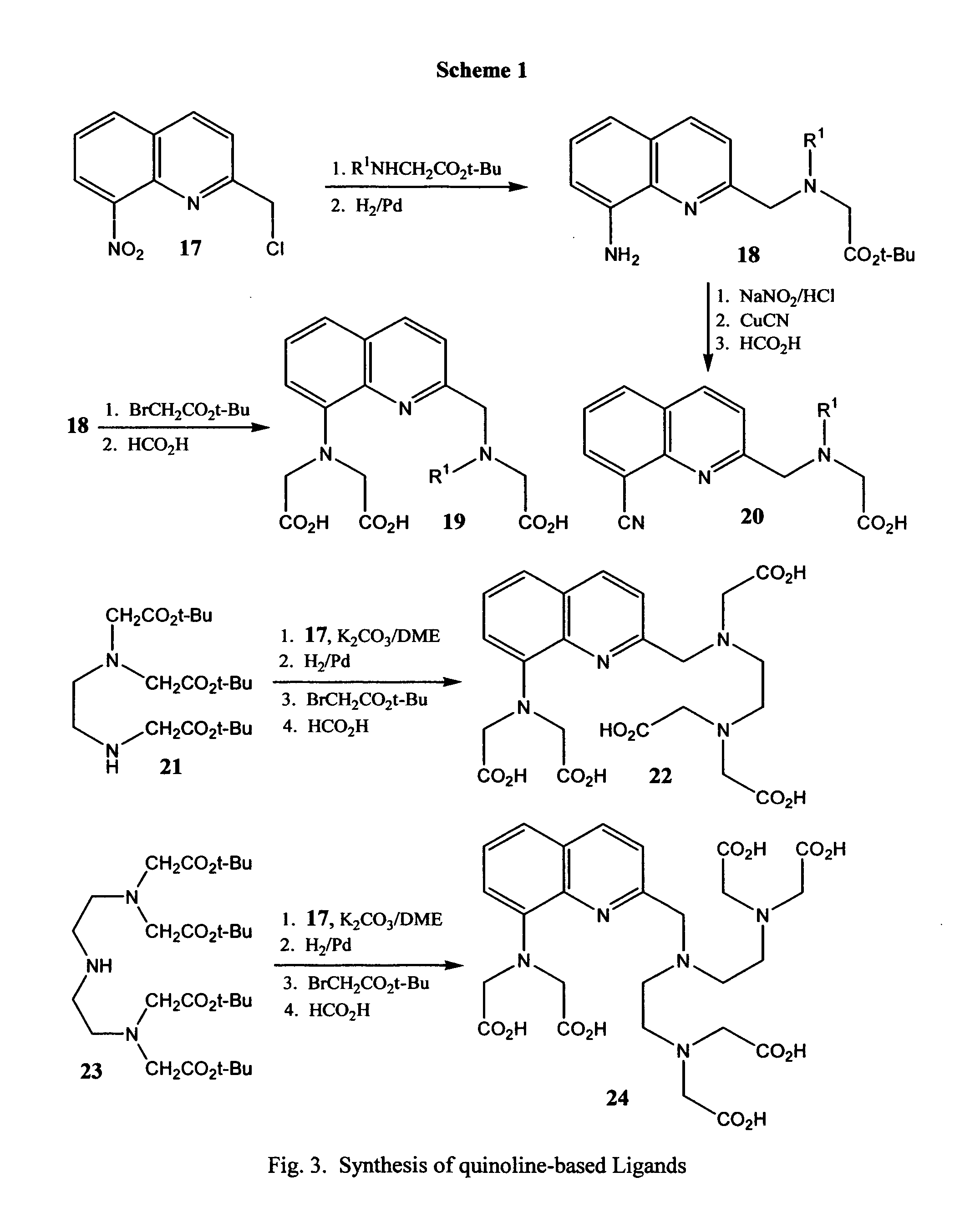Novel quinoline-based metal chelators as antiviral agents
a metal chelator and metal chelator technology, applied in the field of antiviral agents, can solve the problems of reducing bioavailability, reducing bioavailability, and reducing the effect of aldehydes and ketones
- Summary
- Abstract
- Description
- Claims
- Application Information
AI Technical Summary
Problems solved by technology
Method used
Image
Examples
example 1
Preparation of Inhibitor 19
[0040] Step 1. A mixture of 2-chloromethyl-8-nitropyridine, (10 mmol), sarcosine t-butyl ester (11 mmol) and finely ground anhydrous potassium carbonate (30 mmol) in ethylene glycol dimethyl ether (DME) (20 mL) is heated under reflux for 8 hours. The reaction mixture is filtered hot and solid is washed with 30 mL of DME. The filtrate is evaporated in vacuo and the crude product is purified by recrystallization or chromatography to give 2-(N-methyl-N-t-butoxycarbonylmethyl)methyl-8-nitroquinoline.
[0041] Step 2. A solution of the nitro compound (10 mmol) from Step 1 is dissolved in methanol and carefully treated with 10% Pd—C under a gentle flow of argon. Thereafter, the heterogeneous mixture is hydrogenated at about 3.5 atm (about 50 psi) for 4 hours. The reaction mixture is filtered through Celite and the filtrate evaporated in vacuo. The crude product is purified by recrystallization or chromatography to give 8-amino-2-(N-methyl-N-t-butoxycarbonylmethyl...
example 2
Preparation of Inhibitor 20
[0044] Step 1. A mixture of the amino compound (10 mmol) from Example 1, Step 2 and sodium nitrite (15 mmol) in methanol is cooled to 0° C. and carefully treated with 1M HCl (20 mL) added dropwise under inert atmosphere. Thereafter, the mixture is stirred at 0° C. for 30 minutes. Thereafter cuprous cyanide (12 mmol) in water (10 mL) is added to the reaction mixture and stirred at ambient temperature for one hour. The reaction mixture is poured onto water and extracted with methylene chloride. The organic layer is separated, washed copiously with water, dried over anhydrous sodium sulfate, filtered, and the filtrate evaporated in vacuo. The residue is purified by chromatography or recrystallization to give 8-cyano-2-(N-methyl-N-t-butoxycarbonylmethyl)methylquinoline.
[0045] Step 2. A solution of the di-t-butylester (10 mmol) from Step 1 in 96% formic acid is heated to boiling and then kept at ambient temperature 16 hours. The solution is evaporated in vacu...
example 3
Preparation of Inhibitor 22
[0046] Step 1. A mixture of 2-chloromethyl-8-nitropyridine, (10 mmol), the tri-t-butyl ester 21 (11 mmol) and finely ground anhydrous potassium carbonate (30 mmol) in ethylene glycol dimethyl ether (DME) (20 mL) is heated under reflux for 8 hours. The reaction mixture is filtered hot and solid is washed with 30 mL of DME. The filtrate is evaporated in vacuo and the crude product is purified by recrystallization or chromatography.
[0047] Step 2. Hydrogenation of the nitro compound (10 mmol) from Step 1 is carried out in the same manner as in Example 1, Step 2. The crude product is purified by recrystallization or chromatography.
[0048] Step 3. Alkylation of the amine (10 mmol) from Step 2, with t-butyl bromoacetate is carried out in the same manner as in Example 1, Step 3. The crude product is purified by recrystallization or chromatography.
[0049] Step 4. A solution of the penta-t-butylester (10 mmol) from Step 3 in 96% formic acid is heated to boiling an...
PUM
| Property | Measurement | Unit |
|---|---|---|
| Biological properties | aaaaa | aaaaa |
| Bioavailability | aaaaa | aaaaa |
| Toxicity | aaaaa | aaaaa |
Abstract
Description
Claims
Application Information
 Login to View More
Login to View More - R&D
- Intellectual Property
- Life Sciences
- Materials
- Tech Scout
- Unparalleled Data Quality
- Higher Quality Content
- 60% Fewer Hallucinations
Browse by: Latest US Patents, China's latest patents, Technical Efficacy Thesaurus, Application Domain, Technology Topic, Popular Technical Reports.
© 2025 PatSnap. All rights reserved.Legal|Privacy policy|Modern Slavery Act Transparency Statement|Sitemap|About US| Contact US: help@patsnap.com



